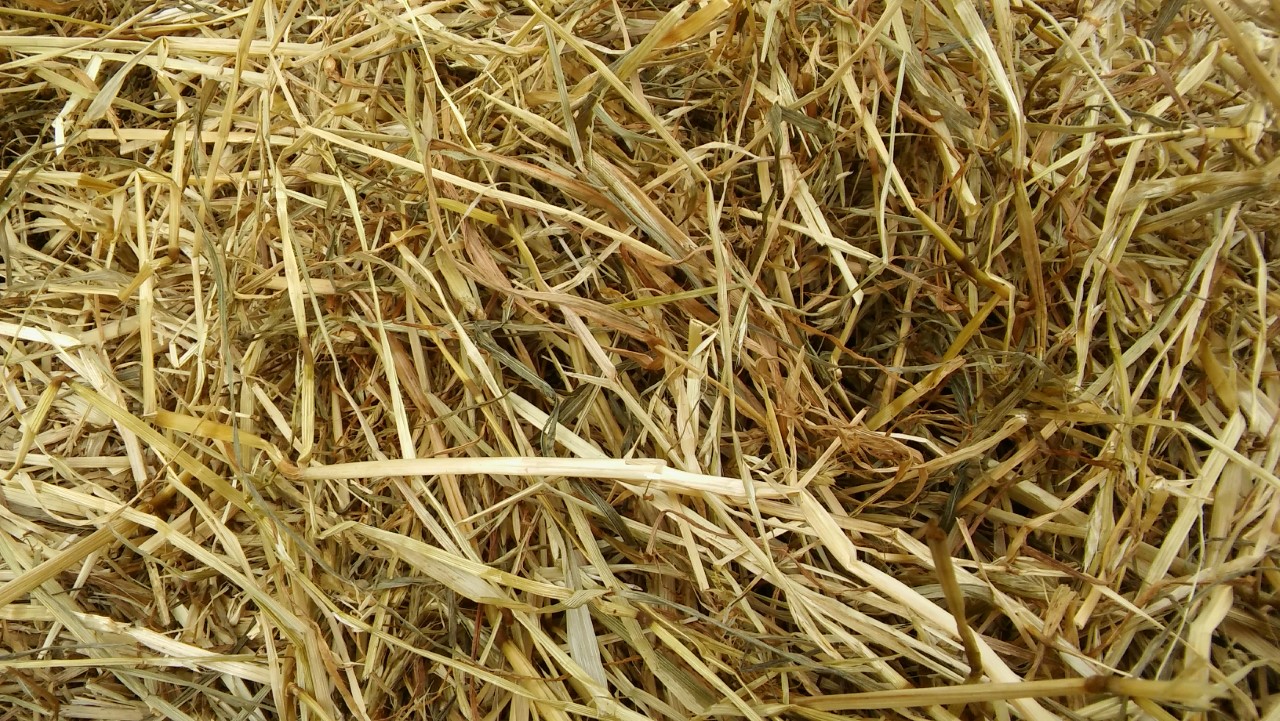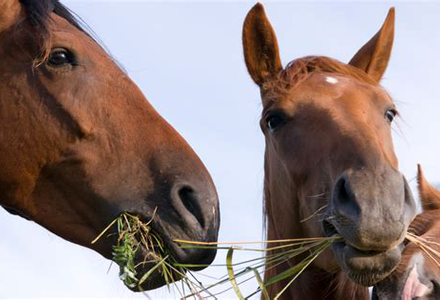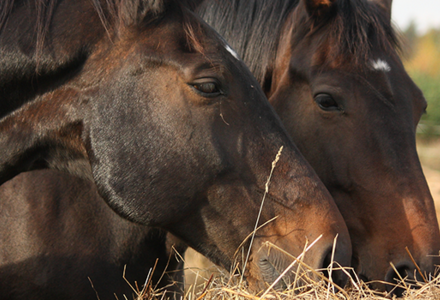Haylage
Haylage is part-way between hay and silage. The grass is cut slightly earlier than for hay, between heading and flowering. It is wilted and baled at 50% to 65% DM, instead of being left to dry to 80% DM as with hay.
 It is then fermented like silage, but a more limited fermentation takes place because it is made using drier material. Haylage is popular with horse owners as it does not contain the high levels of dust and mould often found in hay.
It is then fermented like silage, but a more limited fermentation takes place because it is made using drier material. Haylage is popular with horse owners as it does not contain the high levels of dust and mould often found in hay.
Method of Preservation
Good lactic acid fermentation is still necessary, so the same management practices apply as for silage. Choose an additive that will ensure a fast, efficient fermentation and inhibit the yeasts and moulds that cause heating and moulding.
Due to the high dry matter, secondary clostridial fermentation should not be an issue. However, it can occur in wetter pockets or if an animal carcass is present, leading to animal health problems. Botulism in horses is one example.
Spoiled or poorly fermented haylage will also increase the risk of Listeria, which can affect all livestock, but is particularly serious for sheep. A pH of less than 5.6 will kill Listeria. Good quality, well-fermented haylage should be pH 4.5 - 5.5.
Nutritional value
Because of its higher moisture content, haylage should be fed at around 1.5 times the fresh weight you would normally feed hay. Good haylage will have a pleasant acidic odour, be uniform in colour and feel moist.
Good quality haylage will contain around 10-13% crude protein and have a dry matter digestibility of 65-70%. Less leaf loss occurs during harvesting than for hay because the material is moister, resulting in higher protein content. Haylage is also more palatable and digestible than hay, so there is very little wastage at feed-out.
Advantages of haylage
- Highly palatable
- Produces less dust than hay
- Fewer problems with moulds
- Less weather dependent than hay
- Entirely mechanised production
- Lower field losses than for hay
- Higher nutritional value than hay
Disadvantages of haylage
- Low in nutritive value, particularly protein
- Limited intake potential
- Very weather dependent / field losses can be high
- Can be dusty and high in mould spores, increasing the risk of lung infections in livestock and handlers
- Needs to be stored in dry conditions

